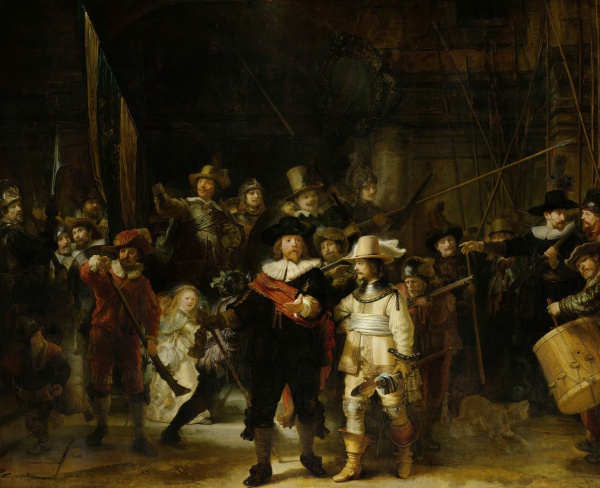Facts About The Night Watch
"The Night Watch" painted by Rembrandt van Rijn in 1642, is one of the most celebrated artworks in history. Currently housed at the Rijksmuseum in Amsterdam, this masterpiece is renowned for its monumental size, dramatic use of light and shadow (a technique known as tenebrism), and the dynamic sense of movement it imparts to what was traditionally a static group portrait of a military company.
The painting depicts Captain Frans Banning Cocq and his lieutenant, Willem van Ruytenburch, leading a group of militiamen. It was commissioned by Captain Cocq and his guards as part of a series of comparable works from the Dutch Golden Age, originally intended to grace the banquet hall of the Kloveniersdoelen in Amsterdam. Over the centuries, "The Night Watch" has been relocated and modified several times, including being trimmed on all sides in the 18th century to fit a new space.
Despite its illustrious history, the painting has faced numerous threats. It has survived multiple acts of vandalism, including a slashing in 1911 and an acid attack in 1990. Each time, it has been meticulously restored. In 2019, the Rijksmuseum initiated a new restoration project, allowing the public to observe the process through a glass enclosure.
"The Night Watch" has left an indelible mark on culture, inspiring countless artistic and cinematic works. It has featured in music, films, and literature, underscoring its lasting influence. In 2011, the Rijksmuseum introduced new LED lighting to enhance both the display and conservation of the painting.
The legacy of "The Night Watch" extends beyond the original canvas. There are various replicas and representations, including a bronze-cast version in Amsterdam, a full-sized replica in Canajoharie, New York, and a Delft blue version at Royal Delft in the Netherlands. These tributes highlight the painting's iconic status and its extensive impact on the art world.

 Germany
Germany